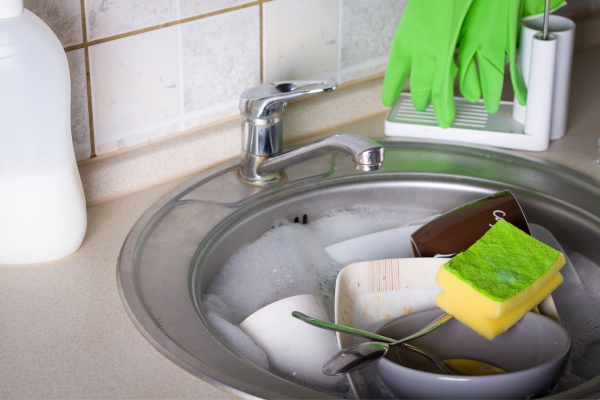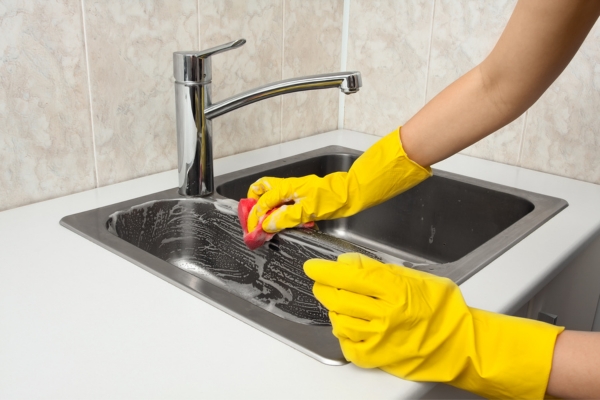Maintaining the pristine look of a copper sink can seem daunting, but with the right approach, it’s quite straightforward. “How To Clean A Copper Sink” offers a step-by-step guide to ensure your sink stays gleaming and free from tarnish. Copper sinks add a touch of elegance and warmth to any kitchen or bathroom, but they require specific care to preserve their unique beauty. By using gentle, non-abrasive cleaning methods and understanding the properties of copper, you can keep your sink looking as good as new for years to come. This guide will walk you through the best practices and tips for cleaning a copper sink effectively.
How Often Should I Clean My Copper Sink?
Regular maintenance is key to preserving the allure of your copper sink. Ideally, you should clean your copper sink after each use to prevent the buildup of grime and mineral deposits. For a more thorough cleaning, a weekly routine involving mild soap and warm water will suffice. This consistent upkeep not only keeps the sink shining but also prevents the formation of patina, which, while not harmful, can alter the appearance of the sink over time. By incorporating these simple cleaning habits, you can ensure that your copper sink remains a striking feature in your kitchen or bathroom.
What Makes Copper Sinks Unique?
Copper sinks stand out due to their distinctive aesthetic and natural antimicrobial properties. Unlike other materials, copper has a living finish that evolves over time, developing a unique patina that adds character and depth to its appearance. This patina process, while attractive to some, can be controlled or prevented with regular cleaning if a more polished look is desired. Additionally, copper’s inherent ability to kill bacteria makes it an excellent choice for hygiene-conscious homeowners. These unique features make copper sinks not just a functional choice, but also a stylish and health-conscious addition to any home.
Importance Of Maintaining A Copper Sink
Maintaining a copper sink is crucial for preserving its beauty and functionality. Proper care prevents the surface from becoming dull and tarnished, ensuring that the sink continues to be a centerpiece in your kitchen or bathroom. Regular cleaning also helps to avoid the accumulation of harmful bacteria and grime, which can compromise the sink’s appearance and sanitary qualities. By investing time in the upkeep of your copper sink, you are prolonging its lifespan and maintaining the investment in your home’s aesthetic appeal. A well-maintained copper sink can elevate the overall ambiance of your space, making it both inviting and visually appealing.
Materials Needed
- Soft Cloths Or Sponges
- Mild Dish Soap
- Baking Soda
- Lemon Or Vinegar
- Non-Abrasive Brush (Optional)
- Microfiber Cloth
Steps To Clean Your Copper Sink
1. Rinse The Sink

Begin by rinsing your copper sink with warm water. This initial rinse helps to remove loose debris and residue from the surface, making the cleaning process more effective. Ensure the water reaches all areas of the sink, including the corners and around the drain, to prepare the sink for the next step.
2. Apply Dish Soap

Next, apply a small amount of mild dish soap to a soft sponge or cloth. Gently scrub the entire sink using circular motions, focusing on areas that appear particularly dirty or tarnished. Avoid using abrasive sponges or harsh chemicals, as these can damage the copper’s surface and remove its protective coating.
3. Rinse Thoroughly

After scrubbing, rinse the sink thoroughly with warm water to wash away the soap and any loosened grime. It’s important to remove all soap residue to prevent any potential streaking or soap scum buildup. Use a clean, damp cloth to wipe down the sink and ensure it is completely free of soap.
4. Deal With Stubborn Stains

For stubborn stains or areas of heavy tarnish, make a paste using baking soda and water. Apply the paste to the affected areas and gently scrub with a soft cloth. Rinse thoroughly with warm water once the stains have been addressed. For persistent stains, you may need to repeat this process or consider using a specialized copper cleaner, always following the manufacturer’s instructions.
5. Polish With Lemon Or Vinegar

To restore the shine and luster of your copper sink, polish it with lemon or vinegar. Cut a lemon in half and dip it in salt, then gently rub it over the surface of the sink. Alternatively, you can use a soft cloth soaked in vinegar. Both methods help to remove any remaining tarnish and bring out the natural beauty of the copper. Rinse the sink thoroughly after polishing to remove any acidic residue.
6. Dry The Sink

Finally, dry the sink completely using a soft, clean cloth. This step is crucial as it prevents water spots and mineral deposits from forming on the copper surface. Make sure the sink is fully dry, especially around the edges and corners, to maintain its polished appearance.
Benefits Of Copper Sinks
Copper sinks offer numerous benefits beyond their aesthetic appeal. They have natural antimicrobial properties, which help to reduce bacteria and maintain a more hygienic environment. Copper is also highly durable and resistant to rust and corrosion, making it an excellent long-term investment. Additionally, the unique patina that develops over time gives each copper sink a distinct, personalized look that adds character to any kitchen or bathroom.
What Should I Avoid When Cleaning A Copper Sink?
When cleaning a copper sink, avoid using harsh chemicals, abrasive sponges, or steel wool, as these can scratch and damage the surface. Acidic substances like lemon juice or vinegar should be used sparingly and always rinsed thoroughly to prevent long-term damage. Avoid leaving standing water or acidic food residues in the sink for extended periods, as they can cause discoloration and tarnish. Also, steer clear of bleach and ammonia-based cleaners, which can strip the protective coating and harm the copper.
Conclusion
Cleaning a copper sink may seem like a meticulous task, but with the right techniques, it can be simple and rewarding. Regular maintenance, gentle cleaning agents, and a little bit of polishing will keep your copper sink looking beautiful and functioning effectively for years to come. By understanding how to care for your copper sink properly, you can enjoy its unique aesthetic and practical benefits while ensuring it remains a standout feature in your home.
